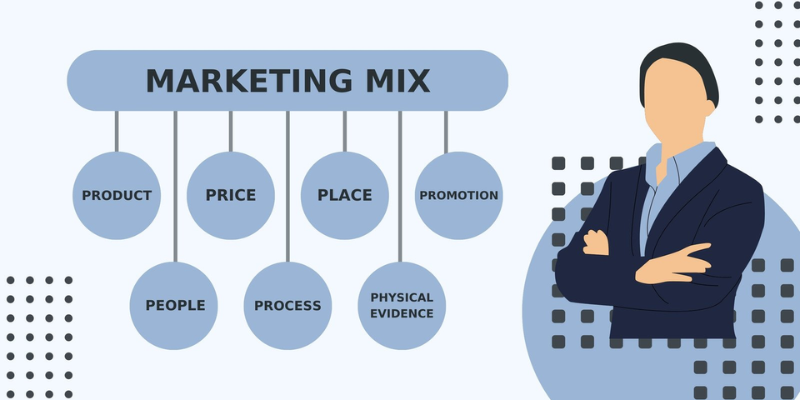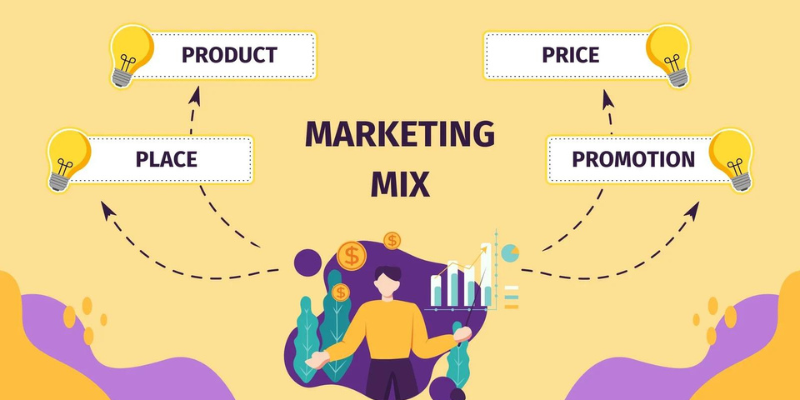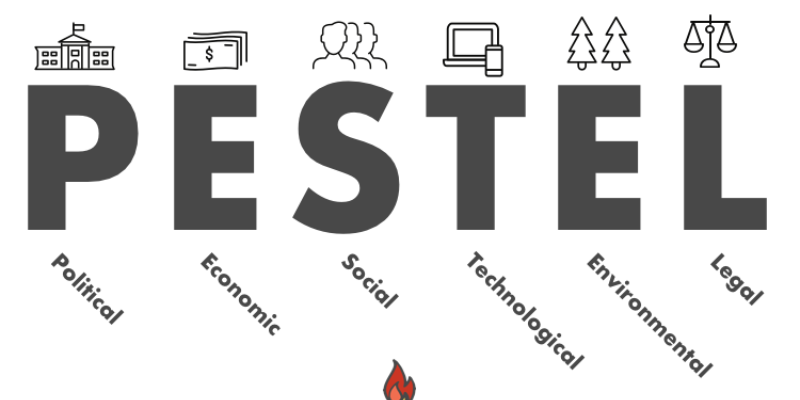The 7Ps of the Marketing Mix: Positioning a Business for Long-Term Success
The 7Ps of the Marketing Mix is a fundamental framework for businesses aiming to develop effective strategies to reach their target audience, deliver value, and gain a competitive edge. Initially conceptualised by Jerome McCarthy as the 4Ps – Product, Price, Place, and Promotion – this framework has evolved to include three additional elements: People, Process, and Physical Evidence (Booms & Bitner, 1981). These seven factors (7Ps) are essential for understanding and creating a comprehensive marketing strategy that considers both tangible and intangible aspects of customer interaction. This article provides a detailed examination of the 7Ps of the Marketing Mix. 1.0 Product The ‘Product‘ refers to the goods or services that a company offers to meet customer needs or wants. It is a central element of the marketing mix because it is what the customer ultimately interacts with. Kotler and Keller (2016) highlight that products are not limited to physical goods but also include services, experiences, and even ideas. In an increasingly competitive market, differentiation of products is crucial for standing out from competitors. Organisations must therefore focus on innovation, quality, and branding to meet customer expectations. For instance, companies like Apple have excelled by offering high-quality products that are both innovative and user-friendly. Their strategy of constantly upgrading their products with advanced technology has made them market leaders in the smartphone and laptop markets (Johnson et al., 2017). Furthermore, the rise of digital products and services, such as software and mobile apps, has expanded the traditional notion of ‘product‘ in marketing. As a result, companies need to continually adapt their offerings to meet evolving market demands. 2.0 Price ‘Price‘ is the amount customers are willing to pay for a product or service, and it plays a pivotal role in determining profitability. Pricing strategies must reflect the perceived value of the product while also considering competition, production costs, and customer purchasing power. Kotler and Armstrong (2014) argue that price is the only element in the marketing mix that generates revenue, while the other elements represent costs. There are several pricing strategies that businesses can adopt, including cost-plus pricing, penetration pricing, and value-based pricing. For example, budget airlines such as Ryanair utilise penetration pricing to offer low-cost flights, thereby attracting price-sensitive customers and establishing themselves in a highly competitive market. On the other hand, luxury brands like Louis Vuitton use premium pricing to create an image of exclusivity and superior quality (Doyle & Stern, 2006). 3.0 Place The ‘Place‘ element of the marketing mix relates to the distribution of products and services, ensuring that they are available to customers at the right location and time. Effective distribution strategies are critical for enhancing customer convenience and accessibility, which can directly influence purchasing decisions. According to Lovelock and Wirtz (2011), businesses need to carefully choose distribution channels to optimise market coverage and minimise costs. Traditional retail distribution has been revolutionised by e-commerce, where online platforms such as Amazon have transformed how products reach consumers. Online marketplaces enable businesses to sell their products globally, bypassing geographical constraints (Chaffey & Ellis-Chadwick, 2019). Moreover, the growing trend of omnichannel retailing – where companies integrate physical and digital channels – has become essential for meeting customer expectations of convenience and seamless shopping experiences. 4.0 Promotion ‘Promotion‘ encompasses all activities designed to inform, persuade, and remind potential customers about a product or service. This element of the marketing mix includes advertising, sales promotions, public relations, and digital marketing strategies. As competition increases, promotion becomes a key tool for building brand awareness and driving customer engagement. Modern businesses use an integrated marketing communications (IMC) approach, which ensures that all promotional efforts are aligned and consistent across different channels (Clow & Baack, 2016). For example, Coca-Cola’s “Share a Coke” campaign combined traditional advertising with social media marketing to create a personalised brand experience for consumers. This campaign effectively enhanced customer engagement and increased sales by encouraging consumers to share their experiences on social platforms (Belch & Belch, 2021). 5.0 People The ‘People‘ component of the 7Ps refers to everyone involved in the delivery of the product or service, from employees to customers themselves. Customer satisfaction is often influenced by the interactions they have with the staff of a business, particularly in service-based industries. As Booms and Bitner (1981) note, people are a crucial part of the service delivery process and can significantly impact a customer’s perception of quality. Companies such as Starbucks have successfully implemented training programmes to ensure that their employees deliver exceptional customer service. By focusing on creating a positive, personalised experience for each customer, Starbucks has cultivated strong customer loyalty (Zeithaml, Bitner & Gremler, 2018). In the digital age, customer service is not limited to face-to-face interactions but also includes social media engagement, chatbots, and other online support mechanisms. 6.0 Process ‘Process‘ refers to the procedures, mechanisms, and flow of activities that contribute to the delivery of a product or service. Efficient processes help businesses deliver consistent, high-quality experiences to customers, which can enhance satisfaction and loyalty. According to Wirtz and Lovelock (2016), the process element is especially important in service industries where intangible elements, such as speed and reliability, contribute to overall value. For instance, companies like McDonald’s have streamlined their processes to ensure fast and consistent service across their global outlets. This efficiency is achieved through standardised procedures and technologies that allow the company to serve millions of customers daily. Additionally, with the rise of digital platforms, many companies are now automating processes to improve efficiency, reduce costs, and provide faster service. 7.0 Physical Evidence The final element of the 7Ps is ‘Physical Evidence‘, which refers to the tangible aspects that customers encounter during their interaction with a product or service. In service-based industries, where the product is intangible, physical evidence becomes crucial for creating a sense of trust and assurance. Lovelock and Wirtz (2011) highlight that physical evidence includes elements such as the design of the service environment, branding, and customer testimonials. For example, hotels and restaurants focus on creating aesthetically pleasing environments that … Read more










